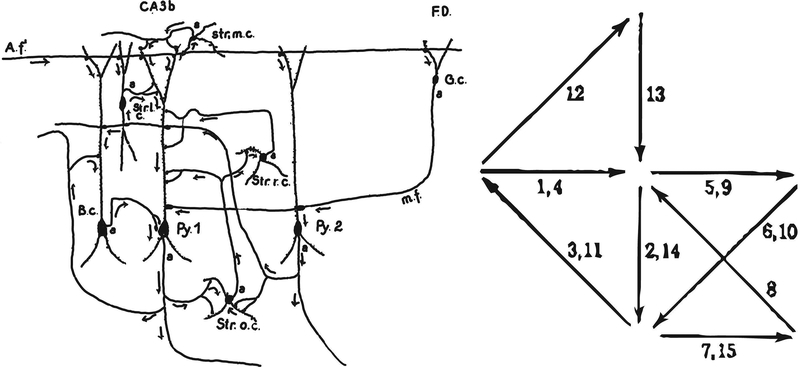Figure 8:
Top. Sensory input arrives into the central nervous system triggering what Hebb referred to as a trace – a holding mechanism in which activity in one loci volleys outward only to return at a later timestep (small arrow circles). This sequence of conditioned responses (“C”) forms a basis for serial ordered behavior. As a solution to the chaining problem as described by Lashley (1951), Hebb offers the idea that a longer loop, initiated by the first response and influencing the 4th, can potentially be used to organize complex behavior (Fig. 20 from Hebb, 1958). Bottom. “Diagramming a possible mechanism of a set to add. The excitation from the prior stimulus, ‘add’, is held in a reverberatory loop. The second stimulus, (8,2), is connected with two motor paths and can evoke ‘10’ or ‘6’; but the reverberatory activity supports only one of these, and the response is ‘10’. If the prior stimulation had been ‘subtract,” a different reverberatory circuit would have been active and would have determined the response ‘6. ’ Needless to say, this diagram is entirely schematic (any resemblance to neural tissue is entirely coincidental)” (Fig. 18 from Hebb, 1958, p. 57).

